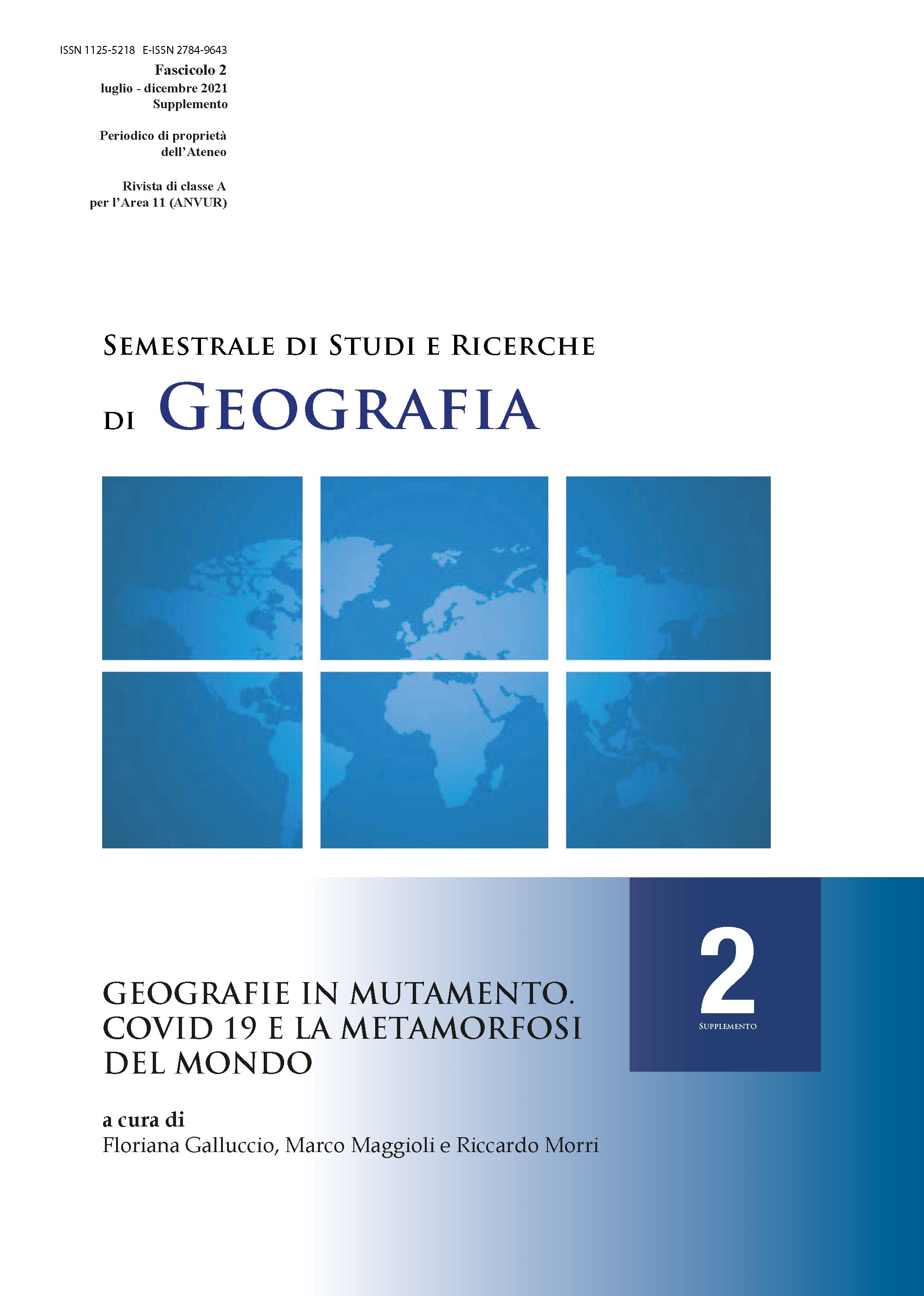The intuition of something else. Geographical features of an anthropocenic catastrophe
DOI:
https://doi.org/10.13133/2784-9643/17641Keywords:
anthropocene, syndemia, territoriality, algocracyAbstract
We are living in an age in which disasters are a basically constant backdrop of breaking news, but that can be named as natural provided only that we ignore the evolutionary path leading to the present situation.Namely, the present pandemic – interpreted as a stress test of our model of development – shows itself as a real «anthropocenic catastrophe». As a catastrophe, not only because of its unquestionable tragic impact on lives, but also, following René Thom, as an abrupt evolutionary discontinuity, as acatastrophe of a representation of the world. Anthropocenic, because, despite the ongoing debate over such concept, it is hard to ascribe SARS-CoV- 2 to nature.The present essay aims at framing the pandemic within the model of territoriality by Claude Raffestin, showing how the neoliberal paradigm has taken to the extreme its choices in terms of blind trust in digitalisation and automation (algocracy), regarding decision-making, work, and health, so finally disrupting the evolutionary inner adjustment process through which territorialities have been able through time to settle singularities into a common framework.
Downloads
Published
Issue
Section
License
Copyright (c) 2021 Semestrale di studi e ricerche di geografia

This work is licensed under a Creative Commons Attribution 4.0 International License.
Gli autori che pubblicano su questa rivista accettano le seguenti condizioni:- Gli autori mantengono i diritti sulla loro opera e cedono alla rivista il diritto di prima pubblicazione dell'opera, contemporaneamente licenziata sotto una Licenza Creative Commons - Attribuzione che permette ad altri di condividere l'opera indicando la paternità intellettuale e la prima pubblicazione su questa rivista.
- Gli autori possono aderire ad altri accordi di licenza non esclusiva per la distribuzione della versione dell'opera pubblicata (es. depositarla in un archivio istituzionale o pubblicarla in una monografia), a patto di indicare che la prima pubblicazione è avvenuta su questa rivista.
- Gli autori possono diffondere la loro opera online (es. in repository istituzionali o nel loro sito web) prima e durante il processo di submission, poiché può portare a scambi produttivi e aumentare le citazioni dell'opera pubblicata (Vedi The Effect of Open Access).


